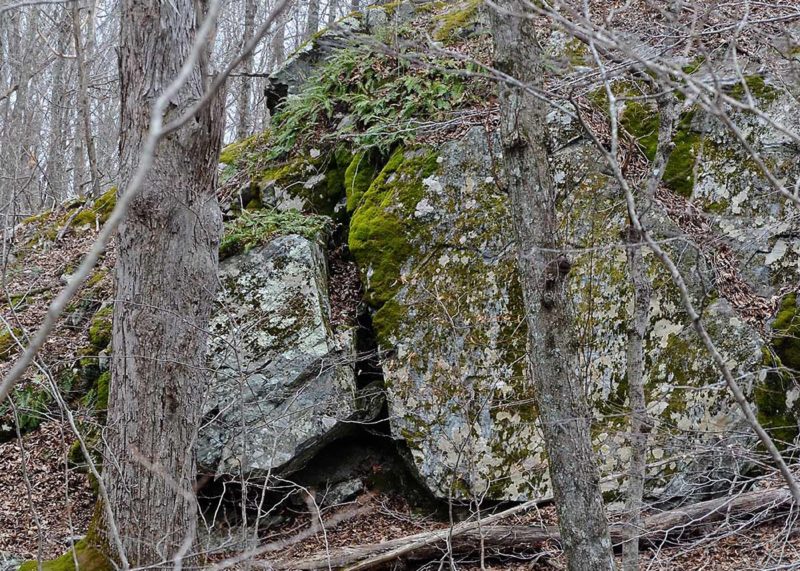Back to All Hike & Seek Properties
This is a large complex made of several preserves. It is mainly a hardwood forest, a rugged terrain with many rocky outcrops, and a beautiful stream. We offer several opportunities to find targets for this preserve because you might not be able to walk the whole thing at once!
Total Hike & Seek Targets: 5
SIGN
Lots of names on this sign! It means there were many generous people who helped us preserve the land.

STREAMSIDE
There are many places where you can get close to the brook. Take a seat. Can you hear the water music? It changes depending on how much water is running over the rocks. Listen in several areas. Take a picture of your favorite spot.

BOULDERS
Big rocks are called boulders. There are many here. Think of the huge ice glacier that dropped them here thousands of years ago. Many have plants, moss and ferns growing on them. Some are split with deep cracks and even trees growing from inside!
SHAGBARK HICKORY
There are several kinds of hickory trees but a favorite has to be the shagbark. You should be able to find it easily by its flaky bark. This tree is a very valuable one. People have used the wood for many purposes, but wildlife get the greatest benefit. The hickory nuts are tasty and nutritious. It takes hard, strong teeth to get through to the ‘meat’ inside. See if you can find shells on the ground. And those shaggy flaps of bark provide hiding places for bats, insects, and even small birds.
STONE WALLS IN THE WOODS
Why would anyone want to build a wall in the middle of the woods? Well, they didn’t! Back when these walls were built, there were hardly any trees because they were cut to make way for farming or pastures. The walls were built as the land was being cleared, a good use for all the stones the farmers found in the very rocky earth. But these walls were also a way to mark their land boundaries and keep animals in or out of certain areas.



